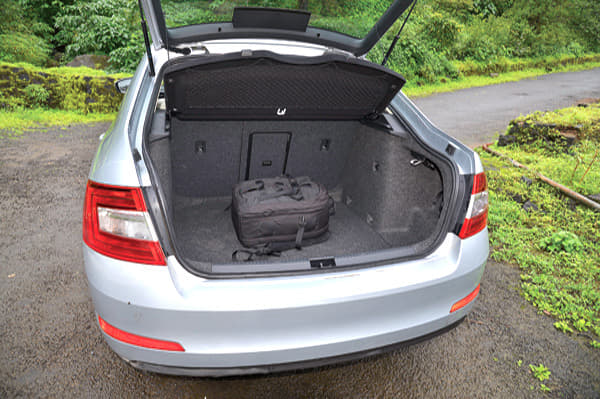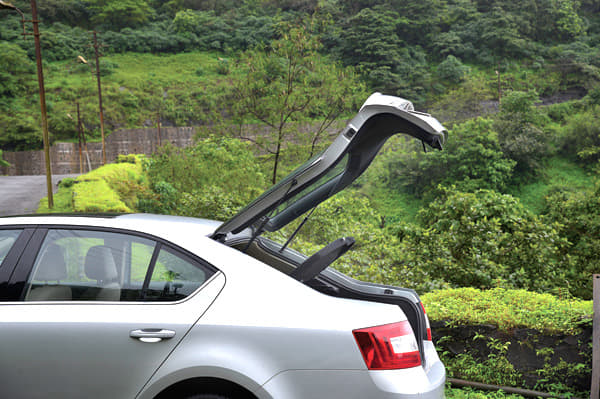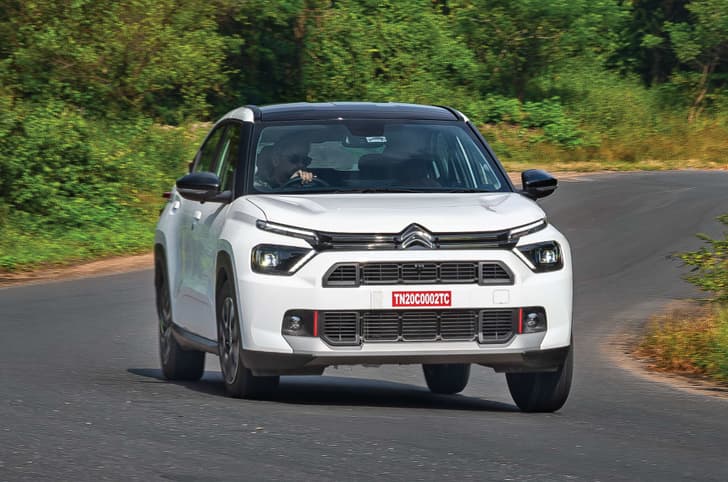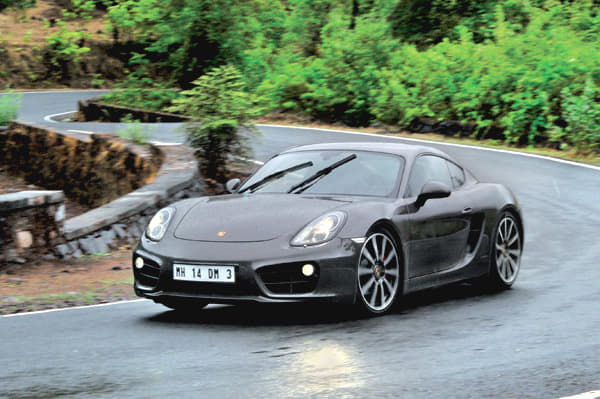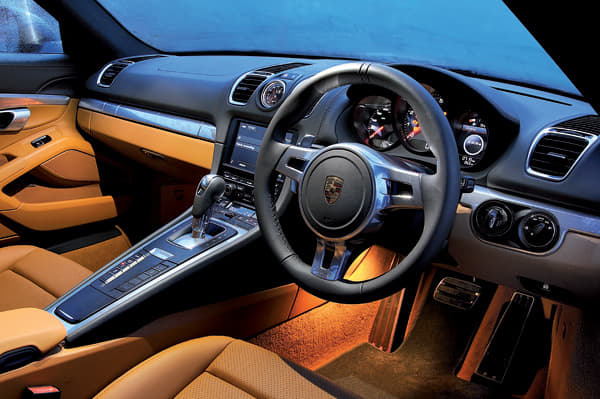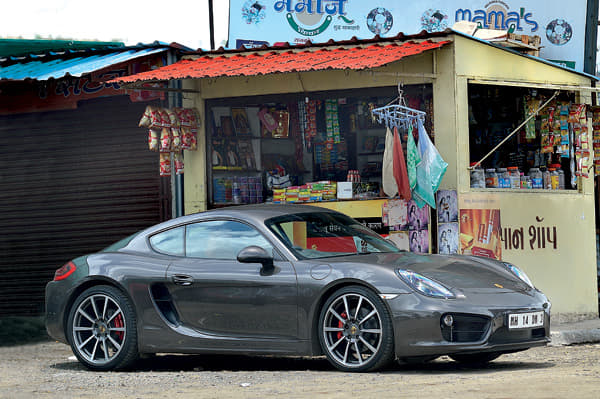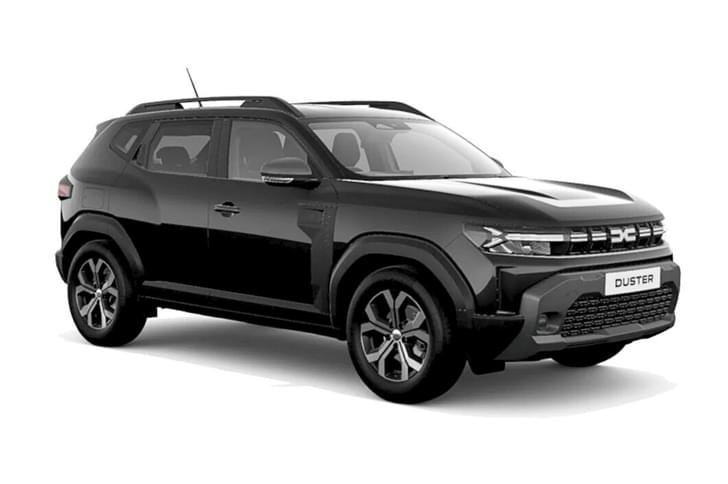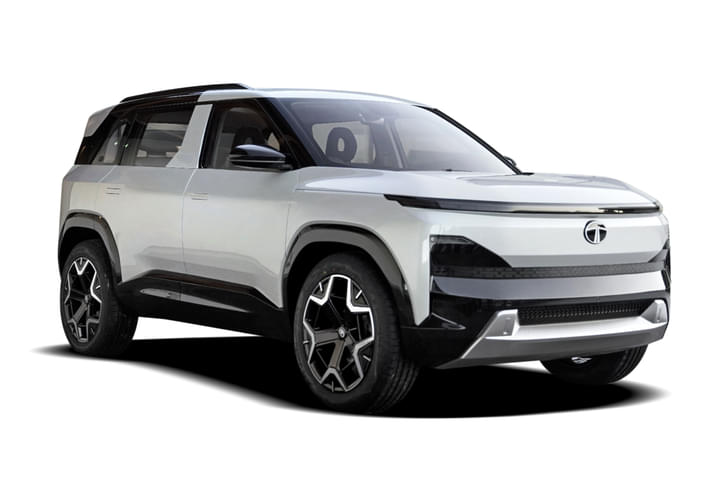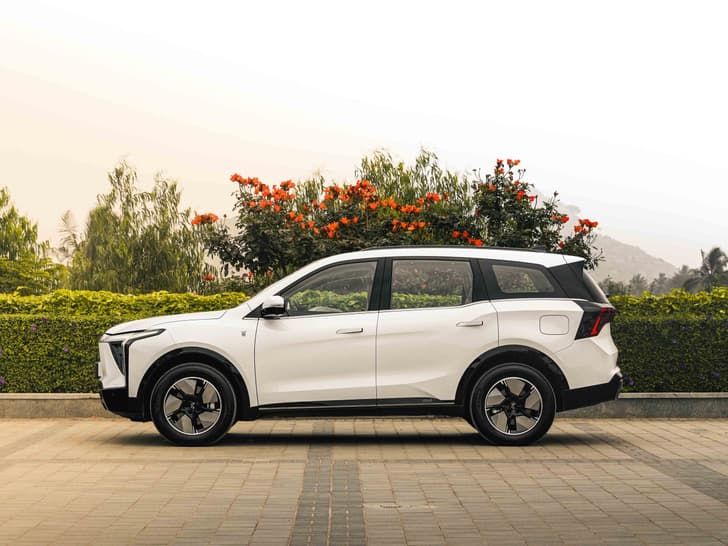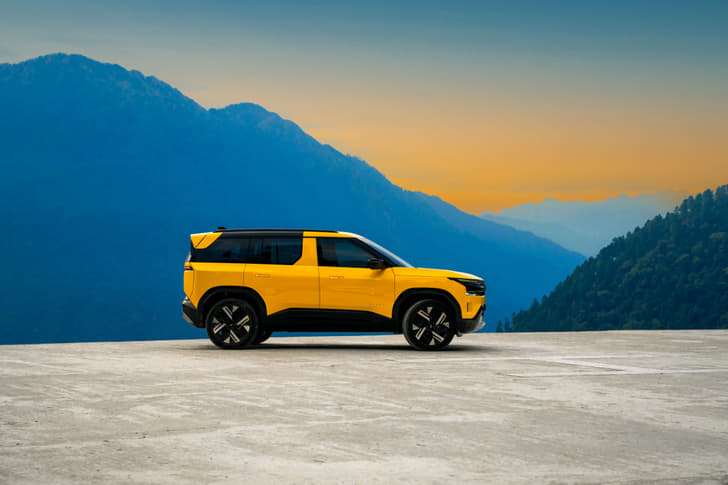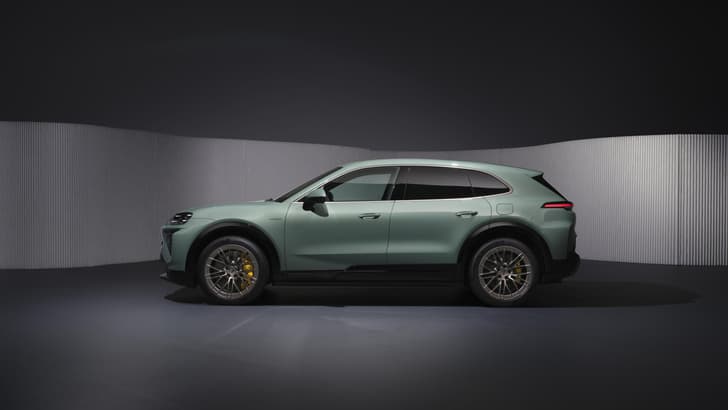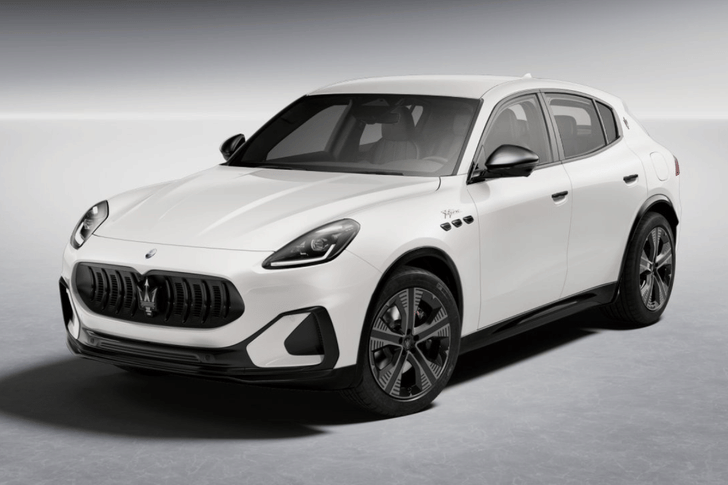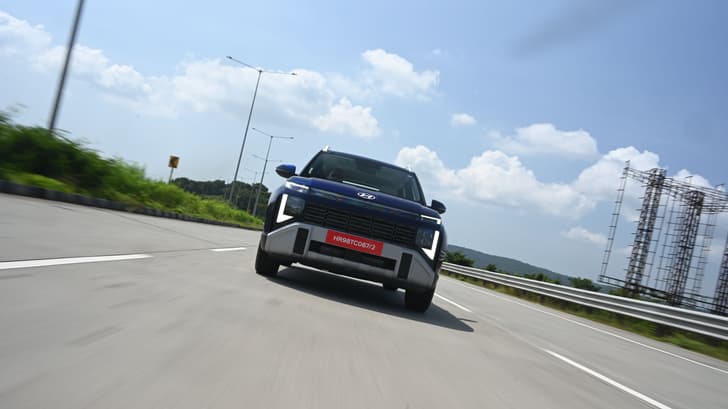This car brings the Skoda Octavia name back to India. After doodling around with ladies names for what was essentially the European Octavia, Skoda has decided that they should stick to the name that defined its Indian journey. This latest-generation Octavia leapfrogs the Laura to sit above it in Skoda’s Indian saloon range and Skoda is moving further upmarket with the new Octy to take on the likes of the more premium VW Jetta. The new Octavia is not only much bigger than the Laura, but also comes with more powerful engines. The Skoda Octavia is offered with a 177bhp (17bhp more than before) 1.8-litre TSI turbo-petrol and the ubiquitous 2.0-litre turbo-diesel that powers so many VW Group products. There's also
In this exclusive and exhaustive road test, we find out if the new Octavia still upholds all the values that first made the Octavia a popular name.
Also read >> New Skoda Octavia variants in detail
The first thing your eyes are drawn to are the 16-inch wheels, which are the same size as the Laura’s but look a bit undersized now that the car is substantially bigger.
The new Skoda Octavia begs for, at the least, a one-inch upgrade to 17-inch wheels, especially since the increased ground clearance is evident in the car’s tall stance. That said, the Octavia remains an understated and well proportioned if a bit tame design. Its clean-cut looks will certainly appeal to a lot of people and the bold, clean strokes help give it a stance that is difficult to fault. Skoda’s new ‘butterfly’ grille, chiselled headlamps andsquare jaw are really attractive and the detailing on the remainder of the car is minimal and almost Audi-like in its exclusion of unnecessary elements. There is, of course, the now standard VW group offering of LED-based daytime running lights though, which look fantastic. If anything, the rear of the car is a bit too bland and looks a lot like the cheaper Rapid’s rump, with identical slashes around the number plate area and similar C-shaped tail-lamps. As for telling the petrol and diesel apart, the petrol gets a tiny lip spoiler on the boot lid, and though our test car didn’t have it, the diesel gets TDI badging.
The new Octavia’s enlarged dimensions clearly place it at the upper end of the executive car segment. It is longer and wider than the outgoing Laura, but crucially, the wheelbase is a massive 110mm longer, translating to a dramatic enhancement of rear legroom. Despite the jump up in size, Skoda’s new Octavia weighs 70kg less than a similarly specced Laura and is substantially lighter than the Jetta, pointing to the tech – lots of high-tensile steel and lighter components to name some – that has gone into making the new chassis as light as possible. Not that you would be able to tell though – the door shut and build quality are still as solid as you would expect of a Skoda.
Interestingly, the diesel and petrol have different suspension, and we’re not talking about mere settings here. The petrol comes with an all-independent, multi-link setup borrowed from the European vRS, while the diesel gets a more cost-effective non-independent torsion-beam axle at the rear. The rest of the specs are the same – both get electrically assisted steering and disc brakes at all four corners, and the diesel weighs 19kg more than the petrol’s 1,376kg.
There is a big step up in quality. The plush seats, faux-wood on the doorpads, high-quality splashes of chrome, piano black surfaces and soft-touch materials everywhere point to an exceptionally well-built cabin. Look closer and you’ll see Skoda’s attention to detail – the glovebox opens with an expensive, well-damped motion and it is felt-lined. There’s a rubberised cubbyhole ahead of the gearlever for your cellphone, and even the door pockets are lined with beige felt (although this might get dirty very soon). Then there are the little things, like the new angular air-con vents that look really smart, and the superbly clear dials, as you’d expect in a Skoda.
If anything, the India-spec model doesn’t get as much kit as the European one – the touchscreen, for example is not the full-size one you get in the top Euro spec, it doesn’t have the selectable driving modes, and there’s no plug point below the rear air-con vents, there's no reverse camera and no keyless entry and go. That apart, you won’t be left wanting for much – there’s a massive sunroof, a powered driver’s seat with seat memory, Bluetooth, a six-CD changer (wonder how many people still use CDs though), dual-zone climate control, parking sensors, remote locking and a media input port. The cabin’s design, meanwhile, is clean and simple and the additional display systems are easy to read and operated by large buttons. The air-con controls in particular, with their knurled finish, feel great to operate.The view out is good as well – the Octavia doesn’t have the high dashboard cowl that the Jetta has and with the huge range of seat and steering adjustments, it’s easy to find a comfortable driving position.The biggest improvement over the Laura, though, is in the rear seats – the extra wheelbase has liberated a lot of space and the seats themselves are supremely comfortable, with adequate thigh support, a broad seat base and superb cushioning. We also liked the wide door openings and the generous headroom. In fact, it is now at least on par with, if not better than the VW Jetta, which had until this moment, the best seats in the class – high praise indeed for the Octavia.
Then of course, there’s that Octavia strong point – its huge rear hatch that opens to reveal an equally massive boot. With the rear seats in place, there’s 590 litres of boot space, and this goes up to a gigantic 1,580 litres with the seats down.
The diesel Octavia saloon model from Skoda gets the same 1,968cc four-cylinder engine that’s carried over from the Laura, albeit with some minor tweaks to improve its torque spread and driveability. You get the same gruff character, and at high revs, the drone doesn’t let you forget that there’s a diesel under the hood.
However, adopt a slightly relaxed pace and the drone quietens down to an unobtrusive hum, while the six-speed, twin-clutch automatic gearbox (a manual will also be available for the diesel) shifts up smoothly and almost imperceptibly. There’s no lack of grunt either – the 32.6kgm of torque coming in early in the powerband and propelling you forward with a nicely linear pull. This updated engine has a wider powerband than the one in the Jetta too – where the VW’s torque curve falls off at 2,500rpm, the Octavia’s hangs on for another 500rpm more. There is a hint of lag at low revs, but otherwise, it’s a very tractable engine and the clever gearbox negates the need to use the tip-tronic function most of the time. The DQ250 gearbox shares identical gear ratios with the Jetta, and yet the Skoda Octavia is over half a second quicker to 100kph than its cousin. Its 141bhp helps it hit 100kph in 9.3sec, which is 0.7sec better than the VW’s. Performance is strong all the way up to 170kph too, after which power starts tailing off. Also in its favouris the punchy mid-range and a tall sixth gear, which makes the diesel Octavia a great long-legged cruiser.
But for those looking for pure driving thrills, it has to be the 1.8-litre TSI. This third-generation EA888 motor now develops more power than before – 177bhp to be exact – and that makes for a really special engine. As before, the TSI is unbelievably smooth and refined right through its rev range and there’s a deliciously engaging snarl when you really wring it out. It’s not the most responsive engine at low revs, but serious shove comes in at around 2,500rpm and simply doesn’t let up until 6,500rpm, where the gearbox snatches up the next ratio. Speaking of which, enthusiasts might bemoan the fact that Skoda isn’t offering a manual version with this engine this time around – the TSI is available only with a seven-speed DSG similar to the one in the Superb. The good news is that this ’box is as impressive as the engine and it’s evident that Skoda has programmed it to provide maximum thrills. Stick it in manual mode and it will downshift on demand, accompanied by a blip from the throttle. In fact, with the 1.8 TSI, you will feel the need to use the tip-tronic mode more often, especially when you are pottering around. Unlike the six-speed in the diesel, this seven-speed gearbox isn’t as eager to downshift quickly in the normal mode (in the interests of fuel economy, we presume) when you tap the throttle. This prompts you to move the superbly finished stubby lever across the gate into manual mode to command it to jump down a gear or two.
That said, the Octavia 1.8 TSI DSG is quicker than the manual Laura TSI, but not by as wide a margin as expected. The Octavia gets to 100kph in 8.01sec, which is just 0.2sec quicker than the car it replaces. It’s because the DSG gearbox has a protection mode that won’t allow a proper smoking-tyre launch. But this little niggle doesn’t prevent the 1.8 TSI from being the most exciting four-cylinder petrol motor in the country today.
The new Skoda Octavia’s MQB chassis is significantly stiffer than the Laura’s old-generation A5 platform and this has allowed Skoda to get away with a softer suspension setup.
You can see this in the way both the petrol and diesel better isolate you from expansion joint intrusions and rough sections of road so much better than the Laura ever did. However, there are noticeable differences between the dynamic behavior of the 2.0 TDI and 1.8 TSI Skoda Octavias, mainly because of the different rear suspensions. The diesel’s setup, for example, is slightly less pliant than the Jetta’s multi-link rear suspension and, at lower speeds, the torsion beam setup has this mildly annoying drumming sound from the suspension over lumpy surfaces, which gets amplified by the large boot cavity. It’s a sound that makes you think the ride is bumpier than it actually is. Drive the petrol’s more sophisticated setup over the same bit of road and you’ll find it rides quieter and softer, and in fact sets the benchmark for ride quality in this segment. However, it’s the diesel that feels more rock solid on the highway. The slight lumpiness you get at town speeds melds into a flat, unflappable poise at higher speeds, which is typical of a European car.The petrol makes you concentrate harder at high speeds – the softer suspension setup results in a rear end that’s constantly moving around over bumps, and you need to constantly make small steering inputs to counter this. We aren’t complaining though – the involving nature of the 1.8 TSI makes it an utter joy to drive.
In fact, both variants have an exploitable chassis that promises good fun behind the wheel. There’s plenty of grip, especially from the front wheels, that lets you really lean into corners, and even when you overstep the limits, the ESP will smoothly and almost unobtrusively cancel out the resulting understeer. Keen drivers may be disappointed by the steering, which though fairly quick and accurate, has an inert feel. Also, the brakes are quite grabby and a touch over-servoed, and this takes a bit of getting used to. But apart from these foibles, there isn’t much else to complain about.
The diesel Octavia Sedan is slightly more fuel efficient than the Jetta, because it is lighter. Its 12kpl and 17kpl in the city and highway better the Jetta’s figures by 0.2kpl in either cycle. The TSI was surprisingly fuel efficient for the power it makes. Its tech helped it post 9.5kpl in the city and 14kpl on the highway, which is quite impressive. However, be warned – this engine is sensitive to the way it is driven. Constant visits to the redline will result in a drastic drop in fuel efficiency.



